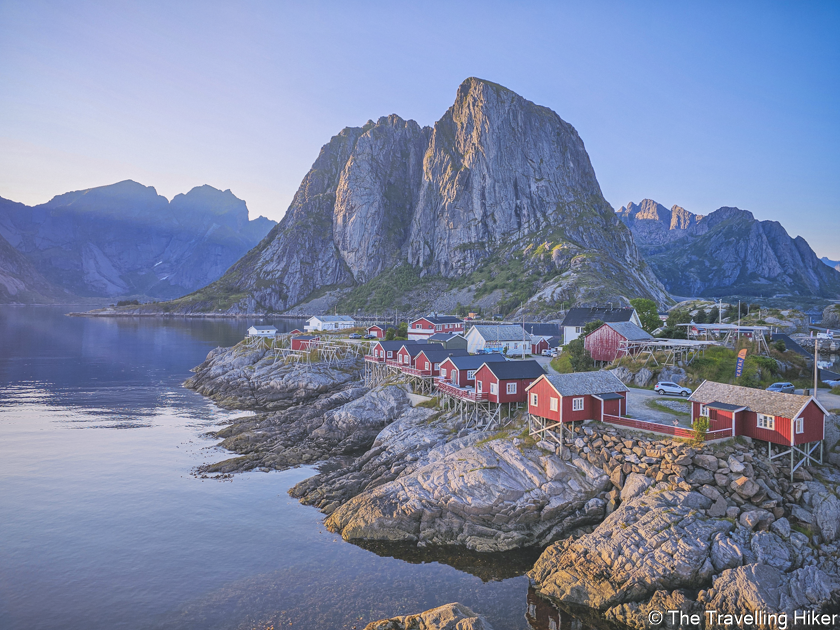Do you want to visit the Lofoten Islands and don’t know how to start planning your trip? Don’t worry, I am here to help you. In this week’s post, I will share the best tips and recommendations to plan a trip to Lofoten.
The Lofoten Islands are some of the most beautiful sceneries I have seen in my life. Here, you will find impressive mountains and white sandy beaches with the water you’ve ever imagined. A visit to Lofoten will allow you to go on some of Europe’s most amazing hikes or explore beautiful small fisherman towns full of traditional Norwegian wooden houses.
I just returned from spending the most amazing 10 days in Lofoten and I want to share everything I’ve learned so that you too can enjoy this beautiful paradise on earth. Are you ready? Let’s get started.
TABLE OF CONTENTS
WHERE ARE THE LOFOTEN ISLANDS?
Let’s begin with a bit of geography and locating the Lofoten Islands. These islands are located in the northern part of Norway. Most particularly, they are part of the Nordland region and, are located 300 km within the Artic Circle!
The Lofoten Archipelago is composed of 7 big islands, connected by bridges, and 2 smaller ones on the southern part, only accessible by boat. The seven main islands are (from north to south) Hinnoya, Austvagoy, Gimsoya, Vestvagoy, Flakstadoya, and Moskenesoya, and the two smaller ones are Rost and Vaeroy.
The whole archipelago is separated from the continent and mainland Norway by the Vestfjord.
WEATHER IN LOFOTEN
One of the most important things to consider when planning a trip is the weather at the destination. This will impact the activities we can do during our holidays.
So what is the weather like in Lofoten? Lofoten has very mild weather, despite being located in the Arctic Circle. This is thanks to the warm North Atlantic Current. These currents give the island mild winters and slightly warmer summers.
With this in mind, it is always good to be prepared for all kinds of weather. The weather can be mild but it is common to have the weather change quickly throughout the day.
SUMMER IN LOFOTEN
The weather in the Lofoten islands is quite warm, with an average temperature of 15 ºC. However, it can be normal to get 25ºC on a sunny day. However, you should never forget you are very close to the North Pole so the weather can change rather fast. This will also apply to the rain. You might wake up to a rainy morning but this doesn’t mean it will rain the whole day.
What other things can you expect during the summer in Lofoten?
- Endless nights. Between mid-June and mid-July, the sun will not set in Lofoten! Experiencing the midnight sun is a must-do at least once in your life!
- Ocean Fog. Have you ever heard of this term? This is a phenomenon that happens when warm air touches cold ocean water, transforming it into a dense fog. This is particularly common during the first summer weeks.

WINTER In LOFOTEN
What can you expect during the winter months in Lofoten? As mentioned before, temperatures will not be that low with an average temperature of 1ºC. Sometimes you will get below-zero temperatures covering the islands with a beautiful white layer of snow.
But don’t get too confident with these numbers. The temperature might not be too low but the strong winds will give you a colder sensation than it is.
Another thing to consider if you’re planning to visit Lofoten during the winter months is the potential lack of daylight. For example, in Svolvaer between December and January, the sun will not rise above the horizon. On the upside, this is the perfect moment to see the Northern Lights!
AUTUMN IN LOFOTEN
The autumn months are the rainiest in Lofoten, so if you’re visiting the islands during these months remember to pack accordingly. In addition, the days will also start to get shorter.
SPRING IN LOFOTEN
And what about the spring? Between April and June, the days will start to get longer but the temperatures can still be quite crispy. In addition, it is also important to know that the snow will not completely melt away until the end of May.
WHEN IS THE BEST TIME TO VISIT LOFOTEN?
The best time to visit will depend on what you want to do and visit here! As you can see from the previous section, the weather will have a big impact during your trip depending on when you visit. But don’t let this stop you from visiting these beautiful islands all year round!
In general terms, if you want to go hiking and enjoy outdoor activities I would recommend going during the summer months or maybe late spring and early autumn. On the other side, if you’re looking to enjoy the northern lights and breathtaking snow-covered scenery then the autumn and winter months are just for you.
We visited Lofoten at the beginning of August and we got to spend 10 fantastic days hiking and enjoying the beautiful scenery that Lofoten has to offer. We also got really lucky with the weather. We had a lot of sunny and warm days and it only rained on two afternoons.
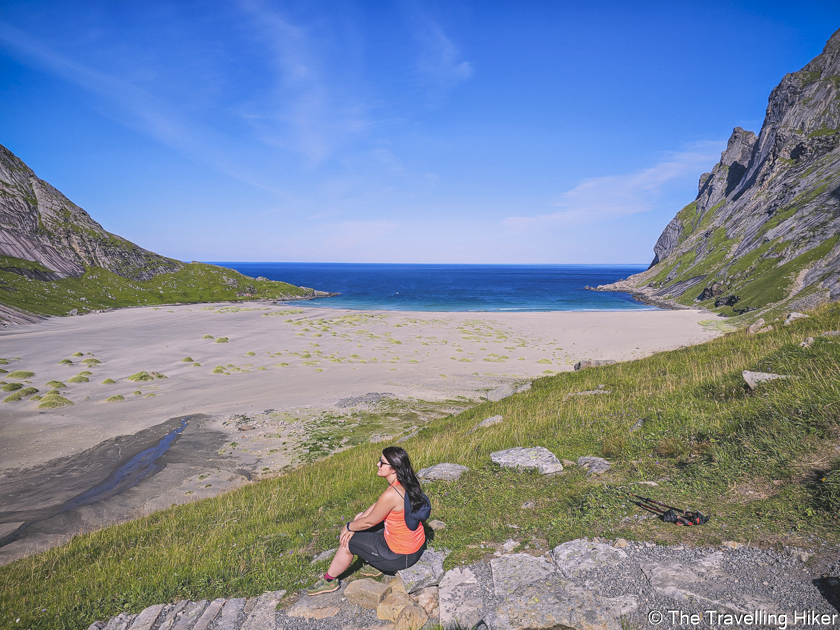
HOW MANY DAYS DO YOU NEED TO VISIT LOFOTEN?
The answer to this question is always a difficult one. We all have a limited number of holidays per year so we need to use them as efficiently as possible. So how many days do you need to visit the Lofoten Islands? This will depend on what you want to do here.
If you want to go hiking and enjoy the islands without rushing from one place to another, I would suggest staying at least a week. However, if you can, I would stay a little bit more. We spent 10 amazing days in Lofoten but would have loved to spend a few more days here and visit the northern islands.
You also have to take into consideration the weather. As mentioned before, weather in Lofoten can be very variable so it is always better to have 1 or 2 extra days as a back-up. In general, we were quite lucky with the weather in Lofoten but we still had 2 days in which the weather didn’t allow us to do everything we had planned.
GETTING TO THE LOFOTEN ARCHIPELAGO
Reaching Lofoten is not that complicated. However, since they are within the Arctic Circle, it is a bit time consuming to get there. There are a few different ways to reach the Lofoten Archipelago; all will take more or less the same time. So which one is the best? I would say, choose the one that is the cheapest. Norway is quite an expensive country as it is, so every euro you can save counts.
BY PLANE
The fastest way to reach Lofoten is by plane, so if you don’t have that much time, this might be the best option. There are two airports within the Lofoten Archipelago, one in Svolvaer and the other in Leknes. However, these airports are only for national flights so you will have to get a connection via Oslo or another international airport within Norway.
The three companies that fly to these cities are Wideroe, Norwegian, and SAS. I suggest you use a flight search engine such as Kiwi.com to explore the best options for you depending on where you are flying from.
Flying to Svolvaer
Svolvaer is the capital of the Lofoten Islands which means that once you are there, you will have more accomodation options. However, Svolvaer is in the northern part of the Lofoten so you will have more driving time to visit the most famous sites within islands.
Wideroe is the only company that offers direct flights from Oslo to Svolvaer.
Flying to Leknes
Leknes is a much smaller town in the Lofoten so accommodation and restaurant offer is much more limited than in Svolvaer. However, its central location within the Lofoten Islands makes it more attractive to enter the archipelago.
Wideroe also offers direct flights between Oslo and Leknes.
BY PLANE + FERRY
Another option is to fly to Bodø Airport and from there, take a ferry to the Lofoten Islands. This is the option we chose and even though it wasn’t the fastest it was the most convenient one for us given the way we had planned our trip.
Another option, if you have plenty of time and also want to visit southern Norway, is to drive to Bodø while you make stops along the way.
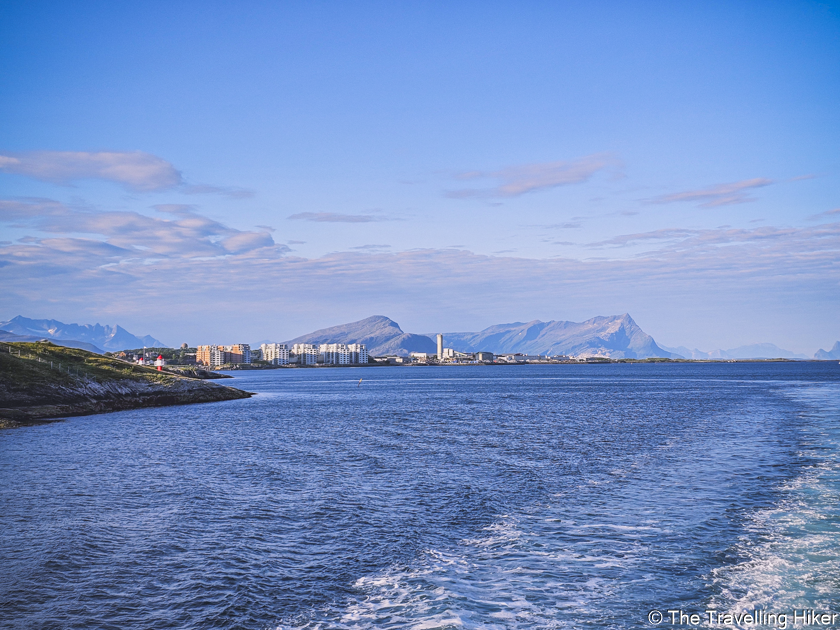
Direct Ferry from Bodø to Moskenes
The company that operates ferries between Bodø and Lofoten is Torghatten Nord. From its website, you can check the different possible options and prices.
The best choice is to take the ferry that goes directly from Bodø to Moskenes without making any stops. This ferry ride takes approximately 3 hours and 30 minutes.
If you plan to visit the Lofoten during the summer, I recommend booking your ferry tickets well in advance. 50% of the tickets are sold online beforehand and the other 50% are sold physically on the day of the trip. However, this means you have to get there in advance and wait in line without knowing if you will get to board the ferry or not.
Good to know: To board the ferry, you must queue on different lanes depending on whether you have booked your tickets in advance or not. At Bodø, lanes 1, 2, and 3 are for the booked in-advance tickets. The other lanes are for those without a reservation. At Moskenes, lanes 8, 9, 10, and 11 are for booked in advance tickets.
Ferry from Bodø to Moskenes via Rost or Vaeroy
Another option, and if you want to visit the southern islands of Rost or Vaeroy, is to board a ferry that stops there. For example, you can take an early ferry to Vaeroy, spend the day visiting the island, and afterwards, get on another ferry to Moskenes. However, make sure to check the timetables very well as these ferries are usually quite early or late in the day.
We wanted to do this option on the return ferry and spend the day in Vaeroy but the ferry to Bodø arrived there at almost 1 am. Our flight to Oslo was that same day at 6 am so it would have meant only sleeping for 3 hours so we decided to just take a direct ferry back.
The best thing about this option is tha if you make a stop at Rost or Vaeroy, the ferry tickets will be completely free. However, you have to spend some time on the island. You can’t just disembark and board again, it has to be a different ferry for it to be free.
Even if you choose the free option, you can still make a reservation via Torghatten Nord website to have a guaranteed spot on the ferry.ø

BY PLANE + CAR
A third option is to fly to Narvik or Tromso Airport. From there, you can rent a car and drive to Lofoten. This option is a good idea if you want to visit the northern part of Norway as well as the Lofoten.
- From Narvik, you will have to drive approximately 2 hours and 30 minutes to reach Svolvaer.
- From Tromso, it will take you 6 hours driving to reach Svolvaer.
MOVING AROUND LOFOTEN
Once you’ve reached Lofoten, you will need to figure out how you’re going to get from one place to another. To move around the Lofoten Islands, you will need to rent a car. Alternatively, you can also rent a campervan and not only have a transportation method but you will also have your accommodation with you.
If driving is not your thing, there are public buses that will take you to most of the places, but you will lose a lot of time.
RENTING A CAR IN LOFOTEN
I always recommend renting a car with Rentalcars. I always use it for all my trips and I have never had any problems with them. Rentalcars is a search engine that compares the prices between the different rental companies allowing you to find the best deals according to your needs.
In our case, we used Rentalcars and booked our car at Bodø Airport.
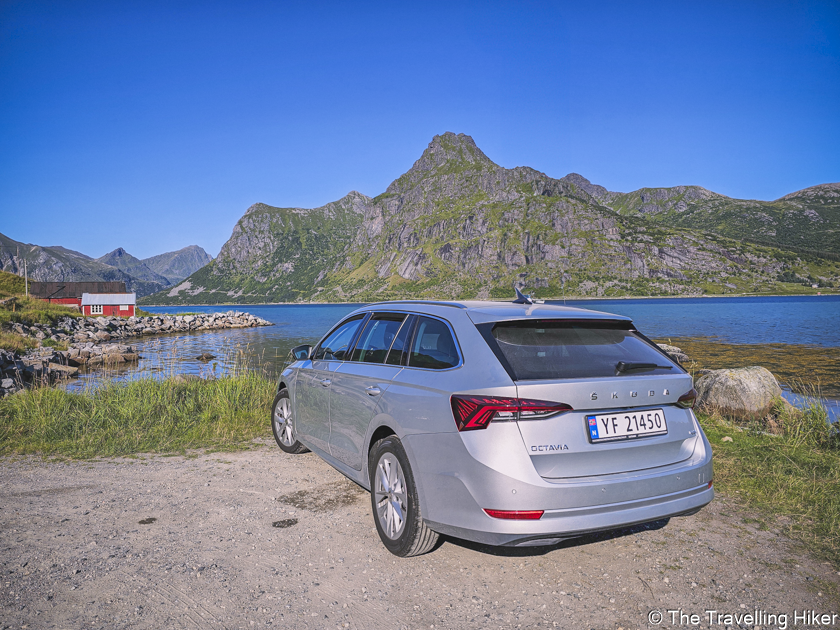
RENTING A CAMPERVAN IN LOFOTEN
Another option is to rent a campervan. This will give you both a transportation method and accommodation, which can be very convenient since wild camping is allowed everywhere in Norway. However, if I am being completely honest, during our stay in Lofoten, there were so many campervans, that it was sometimes difficult for them to find a place to park. We also noticed that in many private lands, the owners had placed a no camping sign.
Nevertheless, if you want to rent a campervan during your stay in Lofoten there are many options available.
- Lofoten Vanlife rents beautiful retro Volkswagen T3 campervans.
- Lofoten eCamper is another alternative with beautifully decorated campers which are also electric.
DRIVING IN LOFOTEN
Driving in Lofoten is relatively easy. However, here are some tips that will make your trip easier.
ROADS IN LOFOTEN
There is one main road in Lofoten, E10 or King Olav V Road, which connects the different islands and major towns in Lofoten. This road as well as the secondary roads that depart from it are very well conserved which makes driving here very easy. However, these roads have some areas where the road is too narrow for both senses or there are blind spots so you cannot drive very fast. But don’t worry, the locals are very respectful when driving.
TOLLS & PAID PARKINGS
There are no tolls in Lofoten, so you don’t have to worry about this.
On the other hand, many parkings in Lofoten, especially those at the most famous sites are paying ones. Most of them, either have a small paying area or can be paid via these apps: EasyPark, GoMarina, and Vipps. I recommend downloading them in advance to your phone so you can use them where needed.
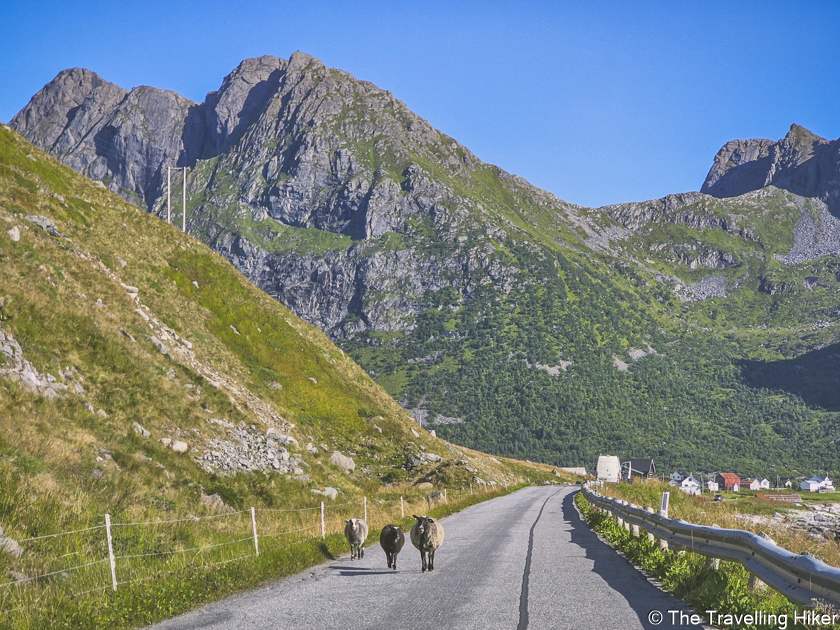
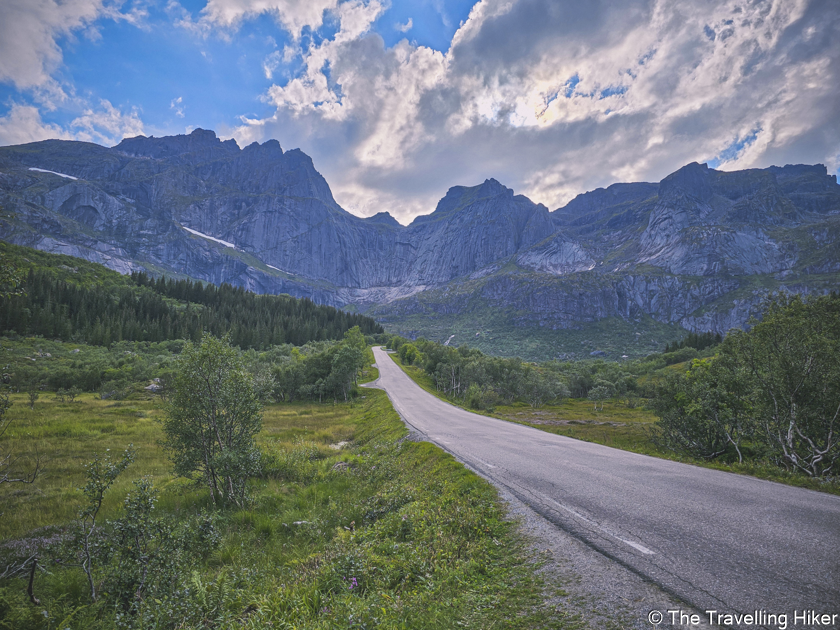
GAS STATIONS
There are a lot of gas stations in Lofoten so this makes it relatively easy to put gas whenever you need it. However, the distances are relatively short so, if you’re only visiting Lofoten, chances are you will not have to do this very often. In our case, we only had to put gas before returning the car in Bodø.
GOOGLE MAPS
There might be some areas in Lofoten where the network is not available. Because of this, I recommend downloading Google Maps so you can use it offline if you happen to be out of network.
ACCOMMODATION IN LOFOTEN
Now that we have reached Lofoten and have figured out how we’re going to get around, it is time to book our accommodation. Here are some tips and recommendations to consider when planning your trip.
When booking your accommodation, you will have to decide whether you want to choose a town in Lofoten and make it your base or stay at different locations throughout your stay. If you opt for the first one, you will have more driving time each day and in the second one, you will have to pack your bags every few other days. In our case, we opted for the second one and switched accommodations every 2 or 3 nights.
Here are the most common towns to stay at Lofoten.
- Reine: This is the most famous and beautiful area of Lofoten.
- A: A small and picturesque fisherman’s village full of Rorbruer.
- Nusfjord: Similar to A, this is another small fisherman’s village with a lot of charm.
- Leknes: A small town in the middle of Lofoten, which is perfect if you want to choose a base and not switch places.
- Ballstad: Another town in the middle of Lofoten, ideal as a base.
- Svolvaer: The capital of Lofoten where you will find a lot of different accommodations and options.
- Kavelbag: A small town not far from Svolvaer.
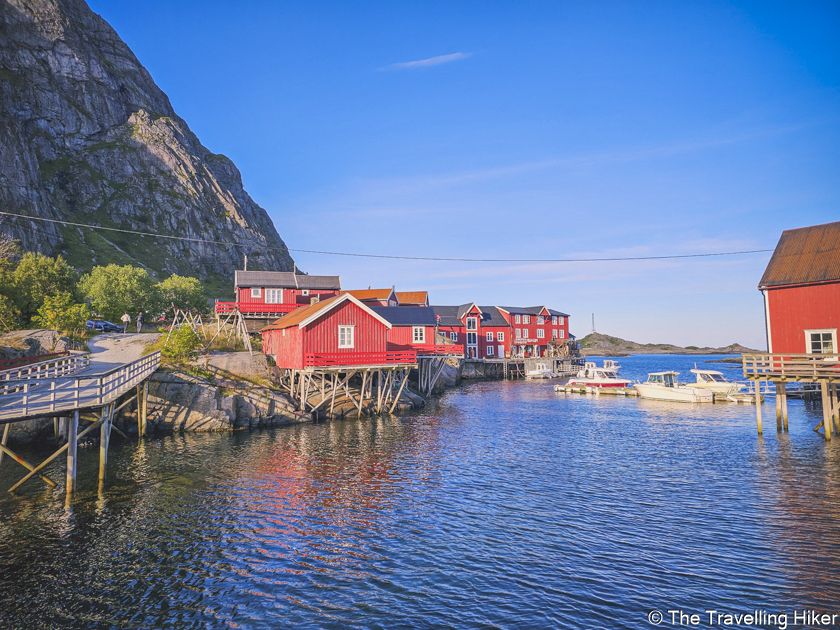
TRAVEL INSURANCE
Travel insurance is one of the most important things to have when traveling or planning a trip. In most cases, you will not have to use your travel insurance. However, it gives me some peace of mind, knowing that if, for whatever reason, something happens I will be covered. Trust me, the last thing you want to deal with, in an emergency, is unexpected costs.
CURRENCY IN NORWAY
The currency in Norway, and Lofoten, is the Norwegian Kroner (NOK). This means that if you want to have some cash, you will need to exchange currencies when you land in the country.
However, it is possible to pay everywhere with your credit card. In fact, during the 17 days we spent in Norway, we never needed cash at all. This is the first trip in which we have managed to pay for everything with our credit card.
LANGUAGE IN NORWAY
The official language in Norway is Norwegian. However, everybody speaks English everywhere you go.
ELECTRICITY IN NORWAY
Norway uses the standard Euro plug socket type “C” or “F”. This means that if, like us, you’re traveling from a European country, you will not need an adapter.
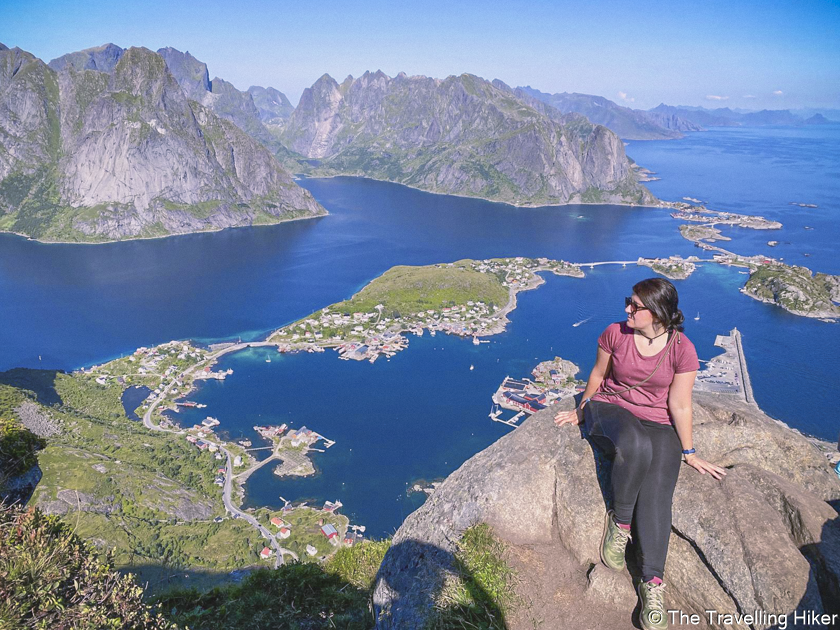
INTERNET IN NORWAY
Many telephone and internet providers in Europe offer free roaming in Norway. If you’re from a European country, check with your telephone provider to make sure you can use your phone freely during your trip.
In case you don’t have free roaming, I recommend using Airalo, who offer esims to have internet access during your trips.
ACTIVITIES IN LOFOTEN
I always use Get Your Guide, when booking any type of activities during my trips. In our case, during our trip to Lofoten, we booked a cruise to the Trollfjord with Get Your Guide and we had a wonderful time.
ITINERARY IN LOFOTEN
To finish this blog, here is a short description of the itinerary we followed in Lofoten. In our case, we decided to travel at a slower pace and really enjoy and be present at the places we were visiting. However, if you don’t have as much time, you can do this route in less days.
- Day 1: Fly to Bodø
- Day 2: Ferry Bodø to Moskenes, Reinebringen, Hamnoy & Sakrisoy.
- Day 3: Day trip to Bunes Beach and Helevestestind
- Day 4: Hike to Ryten and Vikten Beach
- Day 5: Volandstinden Hike, Nusfjord and Ballstad
- Day 6: Hike to Manen, Haukland, Vik and Utakleiv Beaches
- Day 7: Offersoykammen hike, Gimsoy Church and Hennigsvaer
- Day 8: Cruise to Trollfjord and Djevelporte Hike
- Day 9: Hike to Matmora and Kavelbag
- Day 10: Hike to Festvagtind and Unstad Beach and A
- Day 11: Day trip to Kerkfjord and Horseid Beach
- Day 12: Ferry Moskenes – Bodø and explore Bodø
- Day 13: Fly home.

INFOGRAPHIC
You don’t have a lot of time, to read the full blog post? Here’s an infographic I’ve created with the most important information about this hike.

And that’s it for this week’s blog. I hope you liked it and found it useful. Let me know what you think in the comments!
DISCLAIMER: Did you know? This blog uses affiliate partnerships. When you click and book or make a purchase through one of my blog posts, I may receive a small commission (at no extra cost to you). Thank you for supporting The Travelling Hiker!
OTHER ARTICLES ABOUT NORWAY
- PLAN A TRIP TO LOFOTEN
- 12 DAY LOFOTEN ITINERARY
- REINEBRINGEN, THE MOST FAMOUS VIEW IN LOFOTEN
- ACCOMMODATION IN LOFOTEN
- HELVETESTINDEN AND BUNES BEACH HIKE
- THE BREATHTAKING RYTEN HIKE
- THE 10 BEST HIKES IN LOFOTEN
- VOLANDSTINDEN HIKE
- OFFERSOYKAMMEN HIKE
- OSLO – TWO DAY ITINERARY
- THE 21 BEST THINGS TO DO IN BERGEN
- MANNEN HIKE
- THE 10 BEST THINGS TO DO IN BODO
- HIKING TO HORSEID BEACH
ENJOYED THIS GUIDE? PIN IT FOR LATER!



